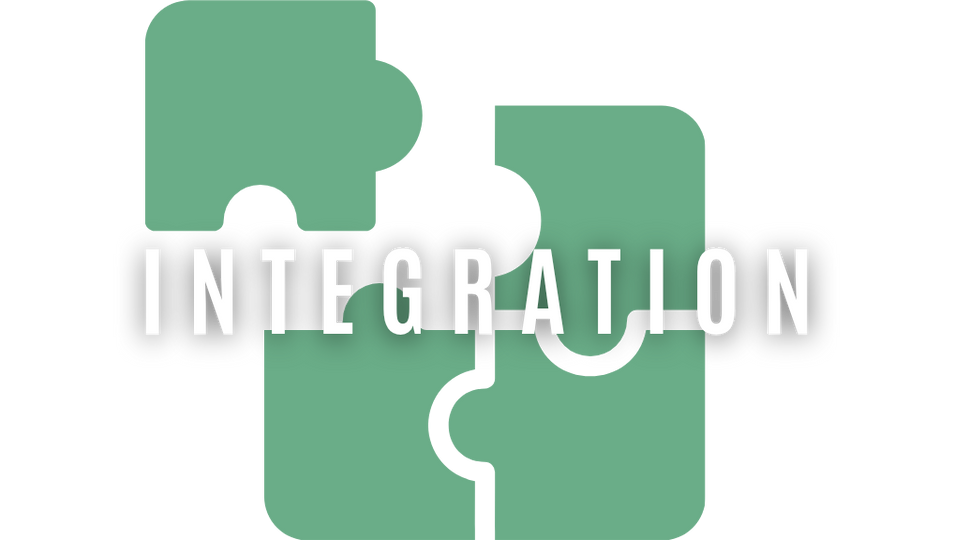
For years, there has been a discussion on integration. In 2000, social scientist Paul Scheffer published an influential opinion piece declaring the Dutch multicultural model inadequate. This fuelled the conversation on immigration and turned it into one of the main political topics. The politician Pim Fortuyn won the 2002 elections and centered his political mandate on immigration. He argued that integration needed to be mandatory and that Dutch norms and values should be a part of that process. Now, years later, integration is still a topic of discussion. For example, politician Dilan Yeşilgöz states that our freedom is being restricted by people in our society who do not have Dutch values. Likewise, Prime Minister Dick Schoof mentions an ‘integration problem’, which would be visible in youth committing crimes. These reflect a broader narrative portraying immigrants as unwilling or unable to integrate.
However, what does it mean to be integrated? Does it mean speaking the language, having a job, making Dutch friends, adopting local customs, or simply being accepted by Dutch society? Most people in the Netherlands define integration as someone participating in society, which involves speaking the language, working, and not causing disturbances. While most agree that integration is a joint effort, it seems both people with and without an immigration background believe that the other group doesn't do their part.
Not everyone who moves to the Netherlands has to integrate. When immigrants stay temporarily or come from the European Union, they are not required to go through the official integration process. This process entails learning the language and gaining general knowledge about the Netherlands, which is tested with exams. Other immigrants, like refugees who apply for asylum, do have to officially integrate once they have received their residence permit.
“Both sides need to open up to each other, but now they are afraid”
The journey of integration for asylum seekers in the Netherlands
When asylum seekers enter the Netherlands, they are immediately sent to the arrival refugee centres in Ter Apel or Budel to apply for asylum. They usually have to stay there for about 6 days, until their registration hearing. The registration hearing is the first interview asylum seekers have, in which their case will be started. They will be asked about their situation to estimate the time needed for interviews later on.
After the registration hearing, they will be sent to COA locations for the first months. The current average is 21 months. During this time, it is difficult for asylum seekers to work. They are only allowed to work if an employer requests a special work permit for them and if their application has been under consideration for at least 6 months. Once asylum seekers receive their residence permit, they can start working, studying, and join municipal integration programmes such as language courses. In short, they can start actively taking part in society.
“You are just waiting on a person to listen to your story and on whether they agree to protect you or not. So for me it was a period of staying without earth, without breath, without any connections”
Do immigrants do their part?
Integration is a long and complicated process that involves different factors, raising the question of whether immigrants put enough effort into the integration process. The following paragraphs will present some facts based on research, which can be used to determine your own opinion.
Disclaimer: The following paragraphs will include statistical averages that do not represent every individual.
Work and economic participation
Immigrants in the Netherlands have unique challenges in the labour market. They usually have lower education and work in lower-paying jobs than the average Dutch citizen, mostly in fields that are less occupied by Dutch people without a migration background. 9.2% of immigrants are employed with a low income and rely on social welfare benefits to stay above the poverty line. This is a high percentage compared to the Dutch people without a migration background, of whom only 1.7% use these benefits. There are a number of reasons why immigrants generally have lower-paid jobs and are more likely to rely on benefits. Language barriers, diplomas not being recognised, and ongoing bias and discrimination make it harder for immigrants to find stable, well-paying jobs. However, the percentage of migrants who have paid work has gone up significantly in the last few years. This leaves the unemployment assistance rates very similar, with 1.3% of immigrants and 1.1% of people without a migration background getting assistance because of unemployment.
“Everything is a lot more individualistic, and because of that, I have way less friends here.”
Living situation and criminal activity
Criminal activity has been going down in all ethnic groups in the Netherlands, including in immigrant communities. When comparing criminal activity of immigrants to the whole Dutch population, crime rates are higher. However, when comparing the criminal activity to citizens in a similar socio-economic position, immigrants have lower crime rates than citizens without an immigrant background. The position they hold in society, like how they live, has more influence on the likelyhood of criminal activity than the fact that they are immigrants.
In the articles about the housing crisis and criminality, you can find a more thorough analysis of these topics.
Language
The Central Bureau of Statistics (CBS) has researched the language proficiency of immigrants in the Netherlands. They found that most immigrants don't or barely speak Dutch when they migrate to the Netherlands, but almost 90% speak Dutch relatively well after living in the Netherlands for a while. The longer they stay, the more opportunities they have to learn the language.
Norms and values
The debate on whether immigrants actually adapt to Dutch culture has a lot of complexity. The first step to answering this question is defining what Dutch norms and values entail. Even most Dutch citizens do not have a clear answer. In 2019, the Dutch Institute for Social Research (SCP) identified a few values held by the average Dutch citizen.
It is difficult to determine whether immigrants adapt to these norms and values. Research shows there are large differences between, but also within immigrant groups. Norms and values are a highly personal and individual matter, and they are not always clearly observable.
Values held by the average Dutch citizen
The responsibility of Dutch residents
Dutch culture might not be as tolerant as Dutch citizens believe it to be. Most citizens do not support the exclusion of migrants, but they do not view the presence of multiple cultures in society as a gain either. This might be the reason why the majority is not inclined to put much effort into the integration of minorities.
“Since many Dutch people are not aware of the fact that their 'culture' influences all citizens in their country, they do not realise that the segregation of certain immigrant groups could be a consequence of their own attitude towards these citizens” - Anne Gordijn
The expected conformity of immigrants can make Dutch society inaccessible. It puts all the effort of integration on the immigrants whilst making rejection more likely. As long as immigrants do not conform, they might be regarded as outsiders. This is in line with the findings of a study on citizens' perspectives, which studied how Dutch people without a migration background view the children of immigrants. Even though they were born and grew up in the Netherlands, they are often treated differently.
There is no clear answer to what the issues with integration are. However, it seems that many are currently unsatisfied with how integration is going. To change this, the root causes of the issues should defined and addressed.
“I have learned to be more free, more honest, more practical, open. That’s amazing”
The story of Vartie
Vartie is an example of someone who moved to the Netherlands and immediately tried to integrate into Dutch society. She had to abandon her life in Syria, dangerously travel to Turkey, after which she migrated to the Netherlands. She dreams of simple things, she dreams of a future:
“A little family with daughters, pets, a stable life, a good job, a safe environment, and good people. Isn't that enough to have a good life?”
Once she arrived in the Netherlands, she faced new challenges. Initially, the language barrier was the most difficult issue for Vartie. The inability to completely express herself resulted in frustration and loneliness.
“Learning the local language is key to talking to people and getting to know them”
In the beginning, cultural differences were a challenge as well. Vartie was concerned about how her Syrian customs would be received and worried that people might misunderstand her. However, after learning the language, she was able to communicate and better comprehend Dutch culture. Over time, she realised that her open mindset and straightforward personality, which she had to hide in Syria, was a good fit for Dutch society.
Vartie's study of social care was critical to her assimilation. Completing her MBO studies and internship at Travers Welzijn in Holtenbroek provided her not only with professional skills but also with a deeper understanding of Dutch society. Her work now allows her to use her own experiences to support others.
“I just want to help people, refugees, find the right way to start their lives.”
Integration is not possible without social interactions. Vartie recognised this in both her own experience and in her current work. Initially, she felt lonely and socially isolated. She missed the constant contact with her family and friends like in Syria. Her own efforts, such as volunteering, have helped her expand her social circle.
The willingness of Dutch people to initiate contact is vital. She wishes she had received more help from Dutch individuals; it was very difficult to reach out and figure everything out on her own. Yet despite the challenges, she expresses deep gratitude for all the opportunities she has received in the Netherlands and for the sense of belonging she feels in Dutch culture. Her story shows that successful integration requires a collective effort.





